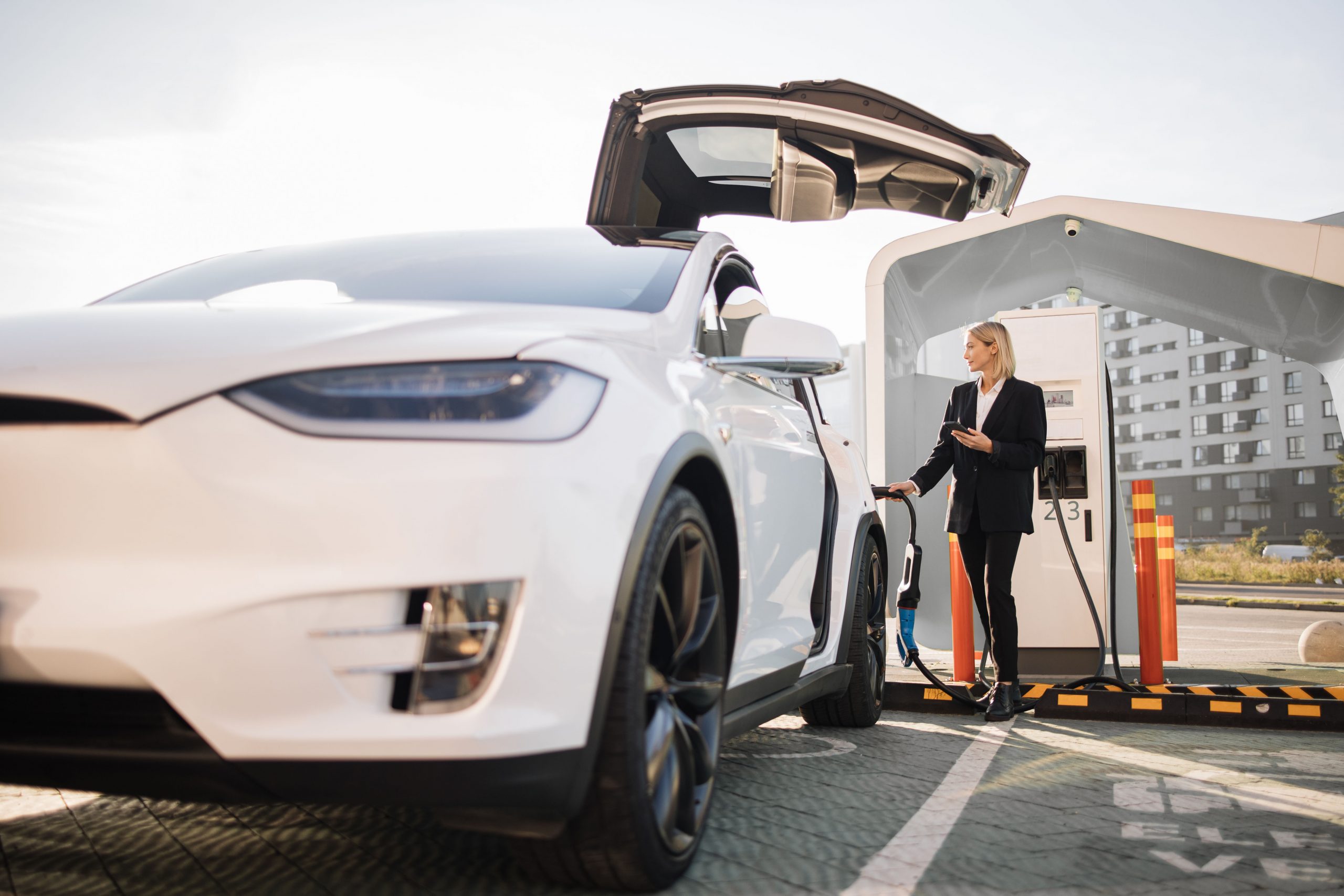
His transition is not just technological; it’s a cultural and economic transformation that is redefining mobility and reshaping our relationship with automobiles.
In the dynamic landscape of the automotive industry, we are witnessing a paradigm shift from the traditional roar of combustion engines to the innovative whisper of electric vehicles (EVs). This transition is not just technological; it’s a cultural and economic transformation that is redefining mobility and reshaping our relationship with automobiles. From the electric revolution to the sentimental journey of classic cars, and the integration of EVs into daily life, we explore the multifaceted rebirth of automobiles and its profound implications on society.
Key Takeaways
- The electric revolution is ushering in a new era of mobility, with consumers showing increased interest and adoption of electric vehicles.
- Classic cars hold an enduring appeal, with initiatives like COE rebirth loans allowing individuals to preserve automotive heritage and emotional connections.
- The shift to electric vehicles is not only about environmental sustainability but also involves economic incentives and a reimagined driving experience.
- Infrastructure development and supportive policies are critical for the seamless integration of electric vehicles into daily life.
- Education and acceptance of EV technology are essential to ensure a smooth transition and to foster a new culture of automotive innovation.
The Electric Revolution: Redefining Mobility

The Shift from Combustion to Electric
The automotive landscape is undergoing a profound transformation as the serene hum of electric vehicles (EVs) becomes the new soundtrack of our streets. This shift is not just about the vehicles themselves, but about a complete overhaul of the driving paradigm. The transition from combustion to electric is propelled by a combination of technological advancements, environmental concerns, and changing consumer preferences.
A recent Auto Pacific study highlights the growing consumer interest in EVs, suggesting that they will soon become the preferred choice over traditional gas-powered vehicles. This interest is driven by the promise of EVs to be less expensive, more feature-packed, and more reliable in the long run.
The electrified future is on the horizon, promising a journey filled with innovation, sustainability, and a new vision for the automotive industry.
As we embrace this electric revolution, it’s crucial to consider the infrastructure that will support it. The AutoPacific EV Consumer Insights Study reveals a wishlist for public charging stations that includes clear signage, accessibility, and the convenience of traditional gas stations, but with a modern, sustainable approach.
Consumer Appetite for Electric Vehicles
The electric vehicle (EV) market is experiencing a palpable surge in consumer interest. The pulse of the market is quickening, with a significant leap in purchase intentions for EVs. This enthusiasm is not just a fleeting trend; it’s a clear signal of a shift in consumer preferences towards more sustainable and innovative forms of transportation.
The AutoPacific EV Consumer Insights Study highlights a wishlist for public charging stations that reflects the convenience of traditional gas stations, yet with a modern, eco-friendly approach. This indicates that future EV owners are not only interested in the vehicles themselves but also in a seamless charging experience.
The shift to electric vehicles is unfolding as a comprehensive reimagining of the automotive experience. It’s about redefining what it means to drive, to refuel, and to enjoy the journey.
While the market is ripe with potential, challenges remain. A notable point of consideration is the fact that many EV owners still maintain gas-powered vehicles in their households. This duality suggests that the transition to fully electric mobility may be gradual, with consumers balancing the new with the familiar.
Rethinking the Driving Experience
The electric revolution is not just about the transition from fossil fuels to clean energy; it’s about reimagining the entire driving experience. With the advent of electric vehicles (EVs), drivers are encountering a new era of mobility that emphasizes not only environmental responsibility but also technological innovation and personal convenience.
- Seamless Integration: The future of driving is expected to be more integrated with our daily lives, ensuring that EVs are not just desired but are also supported by an ecosystem that caters to the nuanced needs of the driver.
- Technological Advancements: Features such as assisted driving and semi-autonomous capabilities are becoming increasingly popular, with higher adoption rates in some regions, indicating a shift towards a more connected and assisted driving experience.
- Charging Convenience: The act of ‘refueling’ is being transformed into a more convenient and enjoyable aspect of owning an EV, with the development of more accessible and faster charging solutions.
The Sentimental Journey: Classic Cars in the Modern Era

Preserving Automotive Heritage
The allure of classic cars is not merely in their aesthetic appeal but in their embodiment of historical significance and personal narratives. To many, these vehicles are not just modes of transportation, but archeological artifacts that capture the essence of a bygone era. The R\u00e9tromobile Exhibit, for instance, has become a sanctuary for enthusiasts, providing a vivid exploration of automotive heritage.
- For individuals with a deep connection to their vehicles, COE rebirth loans offer a means to maintain this bond. These loans enable the restoration and continue use of vehicles that hold significant emotional value.
The journey of a classic car from a rusted relic to a polished piece of Americana is not just a transformation of metal, but a revival of the dreams and aspirations it once represented.
The economic implications of preserving these vehicles are multifaceted, ranging from the personal satisfaction of the owners to the broader benefits of sustaining a cultural legacy. The process of restoration itself can be a testament to resilience and determination, as seen in the story of one man’s quest to restore an old Chevy against all odds.
COE Rebirth Loans and Emotional Attachment
COE rebirth loans offer a lifeline to those deeply connected to their vehicles, providing the means to renew the Certificate of Entitlement (COE) and keep their cherished cars on the road. The emotional bond between an owner and their vehicle can be a powerful motivator in seeking financial solutions to preserve this relationship.
COE rebirth loans not only facilitate the continuation of a vehicle’s service but also allow owners to maintain their emotional and historical ties without the immediate financial strain.
The Intersection of Nostalgia and Innovation
The automotive landscape is witnessing a unique fusion where the sentimental value of classic cars meets the cutting-edge advancements of the modern era. The allure of vintage aesthetics combined with contemporary technology is creating a niche market for retrofitted electric classics, offering a sustainable future without compromising on the charm of the past.
- Retrofitting classic cars with electric powertrains preserves their historical significance while aligning with environmental goals.
- Enthusiasts are increasingly seeking ways to blend the reliability and efficiency of modern electric vehicles (EVs) with the timeless designs of yesteryear.
- The market for electric classic car conversions is growing, providing a bridge between tradition and progress.
The journey of automotive evolution is not just about adopting new technologies; it’s about redefining our connection with cars in a way that honors their legacy while embracing the future.
Economic Impacts of the Automotive Transformation
Financial Incentives for Electric Vehicle Adoption
The transition to electric vehicles (EVs) is incentivized by various financial measures aimed at encouraging consumers to make the switch from traditional combustion engines. Governments are offering tax credits and rebates to reduce the upfront cost of EVs, making them more accessible to a broader audience. For instance, under the new climate bill, EVs must meet specific criteria to be eligible for such incentives, including the stipulation that a significant portion of the vehicle, particularly the battery, must originate from North America.
In addition to federal incentives, local governments and utility companies often provide additional discounts or rebates. These can vary widely depending on the region and can significantly impact the total cost of ownership of an EV. It’s essential for potential buyers to research and understand the incentives available in their area.
The adoption of electric vehicles is not just about the allure of driving a clean, modern car; it’s about the economic benefits that come with it. The right mix of incentives can make EVs a financially smart choice for consumers.
Here’s a brief overview of the incentives currently available for new clean vehicle purchases:
| Incentive Type | Description | Amount |
|---|---|---|
| Federal Tax Credit | Clean vehicle tax credit for qualified EVs | Up to $7500 |
| State Rebates | Varies by state, additional savings | Varies |
| Utility Company Discounts | Discounts on charging equipment/installation | Varies |
Understanding these incentives is crucial for consumers considering an EV purchase, as they can significantly reduce the overall cost and improve the return on investment.
The Cost-Benefit Analysis of Going Electric:
The transition to electric vehicles (EVs) is often touted for its environmental benefits, but the economic implications for consumers are equally compelling. The analysis compares the lifetime costs, over 10 years, of owning and operating a number of popular EVs to equivalent combustion engine vehicles, revealing that EVs can be more cost-effective in the long run.
When considering the cost-benefit analysis of going electric, several factors come into play:
- Initial purchase price
- Federal and state incentives
- Long-term fuel savings
- Maintenance costs
The shift to electric vehicles is unfolding as a comprehensive reimagining of the automotive experience, encompassing not only the financial aspects but also the joy and convenience of driving.
Despite higher upfront costs, EV owners can benefit from lower operating expenses. Fuel savings are significant, given the rising cost of gasoline and the efficiency of electric powertrains. Maintenance for EVs is also typically less expensive due to fewer moving parts and reduced wear and tear. These savings can offset the initial investment over time, making EVs an economically viable option for many drivers.
Sustaining the Automotive Industry through Change
As the automotive industry navigates through the electrification transition, sustaining its growth and relevance is paramount. The industry must adapt to the electric era not just technologically, but also culturally and economically.
The transition to electric vehicles represents a comprehensive reimagining of the automotive experience, extending beyond the simple exchange of fuel types.
To ensure a smooth transition, several key factors must be addressed:
- Consumer Education: A well-informed consumer base is crucial for the acceptance and success of electric vehicles.
- Policy Support: Governments can play a significant role in facilitating this shift through incentives and infrastructure development.
- Innovation: Continuous technological advancements are necessary to meet the evolving demands of consumers and to stay competitive.
The industry’s ability to evolve will determine its future success. As we witness the serene hum of electric motors replacing the roar of combustion engines, the industry’s willingness to embrace change and innovate will be the driving force behind its sustained growth.
Integrating Electric Vehicles into Daily Life
Charging Infrastructure and Accessibility
The transition to electric vehicles (EVs) is not just about the cars themselves but also about the charging infrastructure that supports them. As the number of EVs on the road increases, the need for accessible and reliable charging stations becomes critical. One way to encourage more widespread EV adoption is by installing public charging stations for drivers who may not have charging capabilities where they live.
The electrified future is on the horizon, and it promises a journey filled with innovation, sustainability, and a new vision for the automotive landscape.
However, the current state of charging infrastructure presents challenges. Drivers often face difficulties in finding a working charger, and the experience can vary widely in terms of convenience and comfort.
To address these issues, potential EV buyers have expressed a desire for public charging stations that offer clear signage, fast charging options, and transparent pricing—similar to the amenities of traditional gas stations.
Here is a list of amenities that EV drivers are looking for at public charging stations:
-Charging speed and pricing information
-Clear Signage
-Windshield cleaners
-Air pumps
-Vacuums
These amenities not only provide the necessary services for the vehicle but also enhance the overall experience for the driver, making the switch to electric mobility more appealing.
The Role of Policy in EV Integration
The transition to electric vehicles (EVs) is a complex process that requires not just technological innovation but also supportive policies to ensure successful integration into society. Government initiatives play a pivotal role in accelerating EV adoption by creating a favorable environment for consumers and manufacturers alike.
-Clear signage at charging stations
-Convenient payment systems
-Reliable and fast charging options
The shift to electric vehicles is not merely about swapping gas for electricity; it’s about redefining what it means to drive and to refuel.
The AutoPacific EV Consumer Insights Study highlights the expectations of potential EV buyers, emphasizing the need for a charging experience that rivals the convenience of traditional gas stations. As the industry moves forward, it is imperative that policy decisions reflect the desires and necessities of consumers, ensuring a seamless transition to electric mobility.
Consumer Education and EV Technology Acceptance
As the electric vehicle (EV) market continues to expand, consumer education has become a pivotal factor in fostering technology acceptance. The journey toward electric mobility is not solely about the vehicles themselves but also about the supporting infrastructure and the overall user experience.
Educational initiatives play a crucial role in demystifying EV technology for prospective buyers. The AutoPacific EV Consumer Insights Study highlights the importance of clear and accessible information, suggesting that a well-informed consumer base is more likely to embrace electric mobility.
The Role of Education in Promoting Electric Vehicle Adoption is undeniable. By informing, inspiring, and preparing individuals and communities, educational efforts can accelerate the transition to a more sustainable future.
To illustrate the impact of education on EV adoption, consider the following data:
- 58% of potential buyers are open to considering an EV for their next vehicle purchase.
- A leap in purchase intentions for EVs from 11% in 2022 to 17% in 2023.
These figures underscore the growing enthusiasm among drivers and the need for continued educational outreach to maintain this momentum.
Conclusion
As we draw the curtains on our exploration of the rebirth of automobiles, it is evident that the automotive industry is undergoing a profound transformation. The transition from the thunderous combustion engines to the whispering electric motors signifies more than a technological shift; it represents a redefinition of the driving experience itself. The surge in consumer interest, as highlighted by AutoPacific, underscores the critical role of innovation and emotional connection in this evolution. Vehicles are no longer mere means of transportation; they are cherished companions on our life’s journey, imbued with personal and emotional value. The road to electric is paved with challenges, but also with immense opportunities for a future that harmonizes sustainability with the aspirations of drivers. As we embrace this electrified era, we are not just witnessing the rebirth of the automobile but also participating in the shaping of a new chapter in the American Dream, one that promises a harmonious blend of innovation, sustainability, and a reinvigorated love for the journey on four wheels.
What is driving the shift from combustion to electric vehicles?
The shift to electric vehicles (EVs) is driven by a combination of factors including advancements in EV technology, a growing consumer interest in sustainable and environmentally friendly transportation and increasing government incentives and policies supporting electric mobility.
¿ARE CONSUMERS SHOWING INCREASED INTEREST IN ELECTRIC VEHICLES?
Yes, consumer interest in electric vehicles is surging. Studies such as the one from Auto Pacific indicate that the allure of EVs is capturing the imagination of consumers worldwide, potentially dictating the future trajectory of the automotive industry.
How are classic cars being integrated into the modern era?
Classic cars are being preserved and integrated into the modern era through restoration and rebirth initiatives, such as COE rebirth loans, which allow owners to maintain and enjoy their vehicles with sentimental value while embracing modern automotive innovations.
What are the economic impacts of the automotive transformation towards electric vehicles?
The economic impacts include the creation of new financial incentives for EV adoption, a need for cost-benefit analysis by consumers considering the switch, and the challenge of sustaining the automotive industry through this period of change.
What role does charging infrastructure play in the integration of electric vehicles?
Charging infrastructure is critical for the widespread adoption and integration of electric vehicles. Accessibility to charging stations and the development of a robust charging network are essential to support the daily use of EVs and to reassure potential EV owners about range anxiety.
How important is consumer education in the acceptance of electric vehicle technology?
Consumer education is vital for the acceptance of electric vehicle technology. It helps to demystify EVs, address common misconceptions, and inform potential buyers about the benefits and practicalities of owning an electric vehicle.
“The electrified future is on the horizon, promising a journey filled with innovation, sustainability, and a new vision for the automotive industry. As we embrace this change, the driving experience is poised to become more intuitive, enjoyable, and aligned with the aspirations of modern drivers.”















